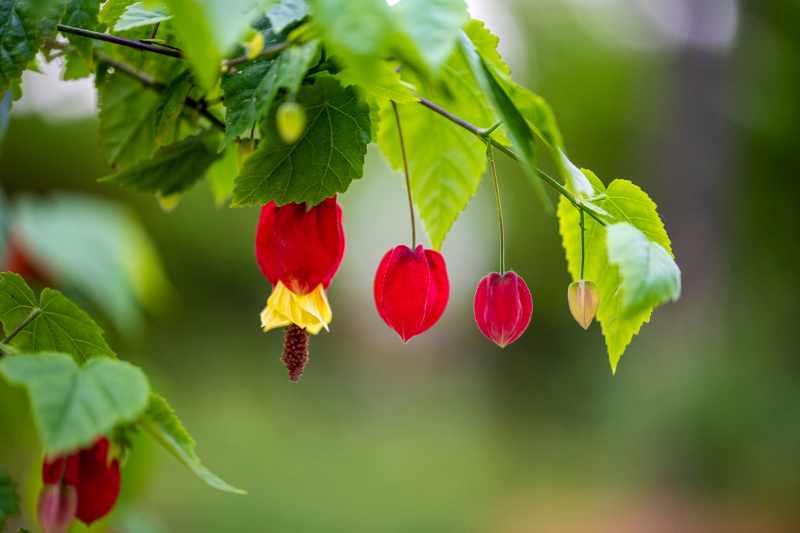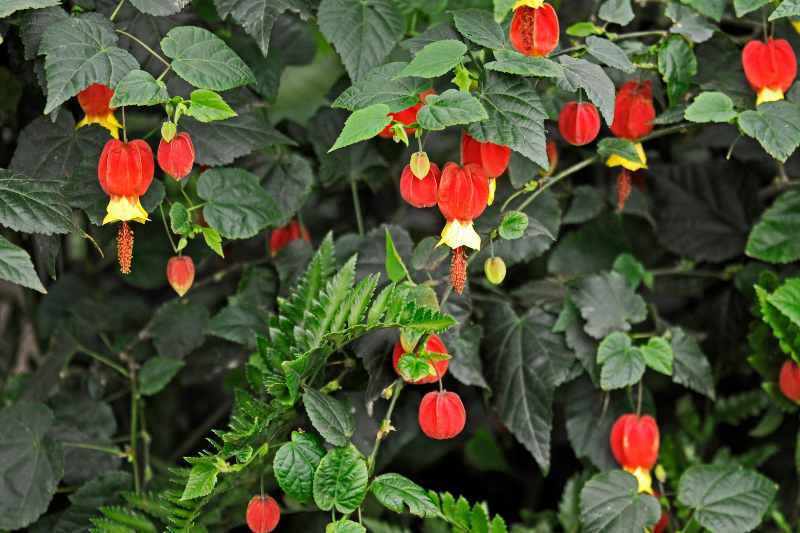The abutilon, also nicknamed "indoor maple" or "Chinese lantern" because of shape of its leaves, is an ornamental bush much appreciated for its delicate bell-shaped flowers. These plants add a touch of elegance and colour to garden or indoors. Pruning your abutilon is essential to maintain its health, stimulate its flowering, and give it a harmonious shape. Don’t worry! With a few simple gestures and right equipment, it’s within everyone’s reach.
What is an abutilon?
Abutilon belongs to family Malvaceae. It is a tropical or subtropical bush that can be grown in open ground in regions with mild climates, or in a pot elsewhere. Its flowers, often red, orange, yellow or white, bloom almost year-round if conditions are favourable. Its rapid growth requires regular pruning to prevent it becoming too invasive or unbalanced.
Find all information you need on growing abutilon in our factsheet Abutilon: planting, pruning and care.

When to prune an abutilon?
Pruning of abutilon is carried out mainly during two periods of year:
- In spring (March–April): after last frosts, to stimulate vigorous growth and prepare flowering season, as it flowers on current year's wood.
- Late autumn (November): a light prune to tidy plant and give it structure before winter. This pruning is not essential. However, potted abutilons require fairly regular pruning to control their development.
Avoid pruning in mid-winter or in height of summer, when plant is dormant or stressed by heat.
Equipment needed
- A well-sharpened pruning shear: for clean cuts that do not damage plant.
- Gardening gloves: to protect your hands.
- A cloth and 70% alcohol: to disinfect pruning shear before and after use, to prevent transmission of diseases.
How to prune an abutilon?
Prepare plant and equipment
- Ensure pruning shear is clean, disinfected and well sharpened.
- Observe plant to identify branches to cut: those that are dead, damaged or unbalanced.
Start with a clean-up
- Remove dead or diseased branches by cutting as close as possible to their point of origin.
- Eliminate branches that cross or rub together, as they may cause wounds.
Reduce overall size
- Cut main branches by about one third of their length to encourage dense, ramified growth. Make the cut just above a bud facing outwards, to guide growth.
- If abutilon has become untidy, restore a balanced shape.
please note : when pruning, make a clean sloping cut about 5 mm above a bud facing outwards. This slope prevents water from pooling on the cut and reduces risk of disease.
Carry out maintenance pruning (optional)
- In autumn, a light prune will be enough to limit height and prepare plant for winter.
What to do if I've pruned incorrectly or neglected my abutilon?
Don’t panic! Abutilon is a hardy plant that tolerates mistakes well.
- Hard pruning to recover: if plant is very unbalanced or bare, don’t hesitate to prune hard in spring, removing up to half of branches. This will stimulate dense regrowth.
- Stagger interventions, but if plant is very bushy you can prune gradually over two seasons to avoid stressing it too much.

Care after pruning
Once pruning is finished, a few simple actions help abutilon recover quickly and remain healthy:
Moderate watering
Water lightly after pruning, especially if carried out in spring. This helps stimulate resumption of growth without saturating roots. Caution: avoid excess water which could stress plant.
Fertiliser application
After a spring prune, add a balanced fertiliser (type NPK 10-10-10) or one specific for flowering plants. This boosts production of new shoots and flowers. In autumn, avoid nitrogen-rich fertilisers so as not to encourage unnecessary growth before winter.
Monitoring
Keep an eye on plant during following weeks. Check that no new branch shows signs of disease or infestation. Remove dead or yellowing leaves that may appear after pruning.
Mulch management (in open ground)
Add or renew mulch at base of abutilon to protect roots and retain moisture.
































Comments